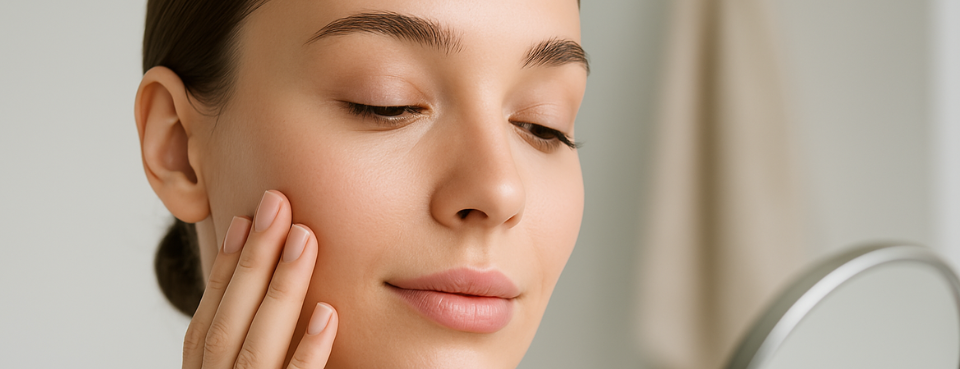Thinking About Botox? What Every First-Time Patient Should Know

Thinking About Botox? What Every First-Time Patient Should Know
Why Patients Ask About Botox
Botox has become one of the most talked-about treatments in both aesthetic and medical care. Patients often come in with questions ranging from, “Will I still look like myself?” to “Can this actually help my migraines?”
In my practice, I’ve seen how the decision to explore Botox isn’t just about lines or wrinkles — it’s often about wanting to feel more refreshed, more confident, or to address something that’s been bothering you for a while. It’s also about wanting to understand what’s real and what’s marketing when it comes to injectables.
Whether you're curious for cosmetic reasons or exploring Botox for therapeutic uses like TMJ or chronic migraines, it's important to have an open, informed conversation with your physician — and to know you’re not alone in wondering.
Understanding Botox: What It Is and How It Works
Botox is a purified protein derived from the bacterium Clostridium botulinum. While that might sound intimidating, in the right hands and in precise doses, it has been safely used in medicine for decades. According to the FDA, Botox is approved for both cosmetic and therapeutic indications and is highly regulated to ensure patient safety.
Botox works by temporarily relaxing specific muscles. When injected, it blocks the nerve signals that tell your muscles to contract. For cosmetic use, that means it can soften lines caused by repeated expressions, like forehead creases or crow’s feet, without altering your natural look.
But Botox isn’t just for aesthetics. It’s also FDA-approved for medical conditions, including chronic migraines, muscle spasms, and excessive sweating. In internal medicine, we often explore Botox as part of a broader, individualized care plan, especially for patients managing stress-related issues or muscle tension that affects quality of life.
Cosmetic Applications
- Softens dynamic wrinkles (from movement and expression)
- Common treatment areas: forehead, frown lines, crow’s feet
- Results typically last 3–4 months
- No downtime, minimal discomfort
Medical Applications
- Chronic migraines
- TMJ and jaw tension
- Muscle spasms (e.g., neck, eyelids)
- Hyperhidrosis (excessive sweating)
Whether you’re considering Botox to look more rested or to ease a medical concern, the most important thing is to understand how it works — and to trust your provider to guide you through that decision.
Is Botox Right for You?
Not every patient who asks about Botox ends up getting it — and that’s okay. The most important part of any decision is understanding whether it's a good fit for your goals, health, and lifestyle.
Here are a few patient profiles that might help you think it through:
- The First-Time Curious: You're starting to notice fine lines and wondering if it's time to try something preventative. You want a subtle result and clear information before making a decision.
- The Refreshed Professional: You’re not trying to change how you look — you just want to appear more rested during long work weeks or Zoom meetings.
- The Medically-Minded: You’ve been struggling with migraines, TMJ, or excessive sweating, and you've heard that Botox may be medically approved for your condition.
- The “Not Yet” Patient: You're interested, but you’re still gathering information and not ready to commit, which is completely valid. You want to talk it over with a doctor you trust.
Botox isn't one-size-fits-all. It's about listening to your body, your concerns, and your goals — and working with a physician who puts your well-being first.
What Happens at Your First Appointment
Your first Botox appointment isn’t just about the injection; it’s a conversation. I always start by sitting down with my patients and talking through their goals, medical history, and any questions they may have. This is a two-way dialogue, not a rushed decision.
Consultation & Assessment
We'll review your health background, medications, and any past experiences with cosmetic or therapeutic treatments. If Botox seems like a good option for you, I’ll examine your facial expressions and muscle movement to determine exactly where and how much to use, always aiming for a natural result.
Treatment Process
The injection itself only takes a few minutes. Most patients describe it as a slight pinch, quick, manageable, and often less uncomfortable than they expected. There's no downtime, and you’ll be able to return to work or your day immediately after.
After Your Visit
You might have slight redness or a tiny bump at the injection site, but this usually fades within 15–30 minutes. I always provide post-care guidance, including what to avoid for the first few hours (like intense workouts or lying down flat).
Our focus is on making sure you feel comfortable, informed, and empowered — both during and after your visit.
What’s Normal to Feel After Botox?
One of the most common questions I hear is, “What should I expect in the hours and days after Botox?” The truth is, most people are pleasantly surprised by how easy the recovery is — but it’s still helpful to know what’s completely normal.
Immediately After Treatment
You may notice some mild redness, slight swelling, or tiny raised bumps where the injections were placed. These usually resolve within 15–30 minutes. Some patients feel a slight tightness in the area, which is expected as the product settles.
The First 24–48 Hours
It’s best to avoid vigorous exercise, lying flat, or rubbing the treated areas. Some people may experience a minor headache or tenderness, nothing severe, and usually short-lived.
When Results Start to Appear
Botox doesn't work instantly. You’ll typically begin to notice changes within 3 to 5 days, with full results around the 10–14 day mark. During this time, the treated muscles gradually relax, and lines soften without making you look “frozen.”
Emotional Expectations
It’s also normal to feel a mix of excitement and uncertainty, especially if this is your first time. That’s why I always encourage follow-up questions and, if needed, a quick check-in to make sure everything is progressing as expected.
The key is knowing that Botox is a gradual process, and feeling comfortable throughout that journey is part of what I aim to support as your physician.
Common Concerns and Misconceptions
If you’ve ever hesitated about Botox, you’re not alone — and you’re not wrong for having questions. A lot of what people believe about Botox comes from outdated information, social media exaggerations, or seeing results that don’t reflect your personal goals.
Here are a few of the most common concerns I hear — and what I share in response:
“Will I look frozen?”
This is probably the #1 fear. The truth is, when Botox is done thoughtfully — and by someone who understands facial anatomy — you’ll still look like you. My goal is always to preserve your natural expression, not erase it.
“Is Botox toxic or dangerous?”
Botox is derived from botulinum toxin, but in its purified, medical-grade form, it has been used safely for decades. It’s FDA-approved, highly regulated, and very safe when administered by a qualified physician.
“Once I start, will I have to keep doing it forever?”
No — Botox is a personal choice, not a commitment. If you stop treatments, your muscles will gradually regain full movement, and lines may return as they were. You’re in control of how often (or whether) you continue.
“Is Botox only for cosmetic use?”
Beyond cosmetics, Botox has become a therapeutic mainstay for conditions like chronic migraines, TMJ, and hyperhidrosis. Botox is recognized as an effective treatment for certain types of migraine when other options fall short.
When in doubt, ask. My role is to provide honest, evidence-based answers so you can make the right decision for yourself — no pressure, no assumptions.
When to Discuss Botox With Your Doctor
The best time to talk about Botox is when you’re ready to learn, not when you feel pressured to act. Whether you're just curious or already leaning toward treatment, bringing it up with your doctor is a great place to start.
If you’ve noticed facial lines that bother you, are experiencing chronic tension or migraines, or simply want to understand whether Botox fits into your wellness goals, your primary care provider can guide you in the right direction.
In my practice, I see Botox as one small piece of a much bigger picture, a conversation about how you feel in your skin, how you’re aging, and how to support your body and mind with intention.
You don’t need to have all the answers before coming in — that’s what I’m here for. When we take the time to understand your concerns, health history, and goals, we can make an informed decision together.
Resources
Botox Overview and Uses
Mayo Clinic (2024): https://www.mayoclinic.org/tests-procedures/botox/about/pac-20384658
Botulinum Toxin Product Information
U.S. Food & Drug Administration (FDA, 2024): https://www.fda.gov/drugs/postmarket-drug-safety-information-patients-and-providers/information-about-botulinum-toxin-products
Botox for Cosmetic Dermatology
American Academy of Dermatology (AAD, 2024): https://www.aad.org/public/cosmetic/fillers-botox/botox
Botox for Chronic Migraines
American Migraine Foundation (2024): https://americanmigrainefoundation.org/resource-library/botox-for-migraine/
Botox Safety and Side Effects
Cleveland Clinic (2024): https://my.clevelandclinic.org/health/treatments/21052-botox
